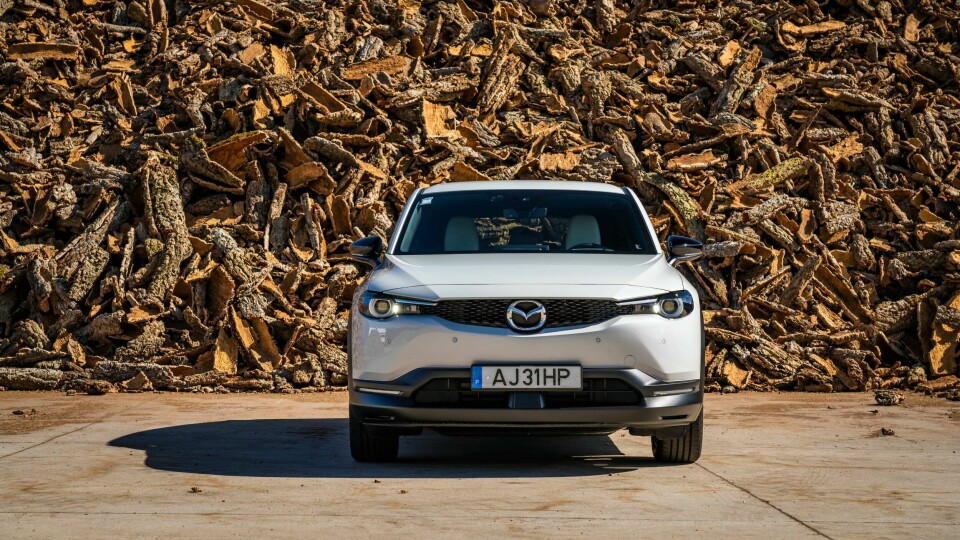
Mazda pops the cork on electric MX-30
Mazda started life as a cork company and is now using the material in its first EV. Car Design News’ Deputy editor Michael Nash visits the site in Portugal where the material is processed
The smell of cork is extremely distinctive – dry and woody, but also rich and warm. It permeates the headquarters of Corticeira Amorim, the world’s biggest cork processing group, where Car Design News has come to see how the material could play an increasingly prominent role inside the vehicle.
“Cork holds a lot of potential for the automotive industry, and the material is becoming more present in the interior design space as a whole – in homes, for example,” says Mazda senior designer Sandra Höner zu Bentrup. ”Cork is versatile and great for both larger areas and accent pieces.”
After presentations from representatives of Amorim and Mazda, a small group of journalists and influencers are invited to touch and feel the sample products on display, of which they are many. From sandals to surfboards, suits to space capsules – the applications for cork are expanding as companies across all industries are under pressure to tick the sustainability box.
And sustainability is at the heart of many new car interiors, including the Mazda MX-30. The model was launched last year and as well as being the company’s first EV, it is also the first mass-produced vehicle to include cork in the cabin – a nod to Mazda’s origins as the Toyo Kogyo cork company in 1920.
The raw material is sourced from cork oak trees, which are stripped of their bark every ten years. Between 40 and 60kg of this cork bark is harvested per tree and is left outdoors to rest and stabilise for at least six months before entering production facilities. Each tree has a life of around 200 years, and stripping them of their bark supposedly contributes to their regeneration. Nearly 50% of the world’s cork is produced in Portugal.
Amorim’s main business is producing cork stoppers for wine. But sections that are deemed unsuitable for stoppers are re-processed and re-purposed, finding their way into a variety of different products such as the cork found on the centre console and inside the door handles of the MX-30. With all the presentations and tour over, we climb into the car and head into the beautiful hills surrounding Porto.
The cork makes for a striking visual contrast in the cabin against the smooth dark leather and shiny silver chrome. Two different shades of cork are on offer depending on the interior trim that is selected. The “modern confidence” trim comes with off-white leatherette, light grey fabrics, and a light cork trim, while the “industrial vintage” trim has a brown leatherette with dark grey fabric and a darker cork.
The cork also feels extremely different to the other surfaces in the cabin. It is slightly coarser than the leather and chrome, with a sandy grain and natural indentations that catch the skin. It is somehow infinitely more natural. ”It exudes a warmth and tactile sensation that only wood can deliver, and with the right dying techniques, it can fit many different aesthetics,” says Bentrup. ”We have just started scratching the surface of what we could do with this material.”
Mazda says that cork is just one of many sustainable solutions that it hopes to leverage as part of its “Ma” interior design philosophy. The Japanese concept roughly translates as negative space, and could be likened to minimalism. Also inside the MX-30 is fabric made entirely from recycled PET bottles that clads the upper door panels.
Interior designers at Mazda are now examining eco-friendly ways of making leather, such as using cactus and mushrooms. These alternatives are not currently suitable for use in mass-produced vehicles, but the team hopes to continue to push the boundaries and find solutions that better serve the planet.














